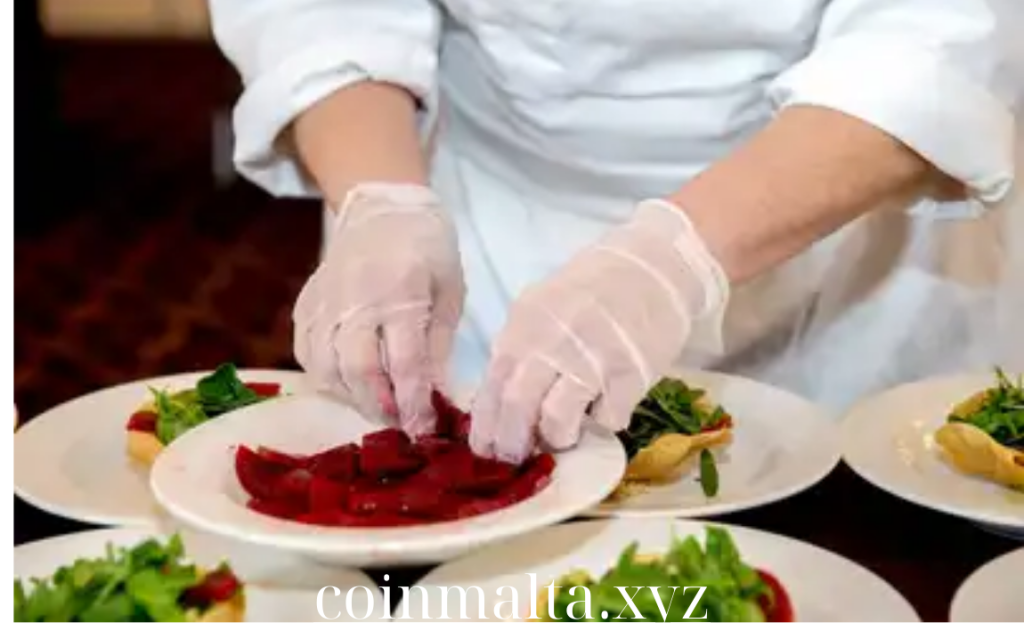Food Safety in Food Service
Best Practices for Safe Food Handling in Food Service Operations
Ensuring safe food handling practices is critical in food service operations to prevent foodborne illnesses, maintain food quality, and comply with health regulations. By following these best practices, food service establishments can ensure that the food they prepare and serve is safe for consumers. Below is a comprehensive guide to the essential food handling practices every food service operation should implement.
1. Personal Hygiene: The Foundation of Food Safety
Personal hygiene is one of the most important factors in preventing the contamination of food. Employees must maintain high levels of cleanliness to ensure the safety of the food they handle.
- Handwashing: Wash hands thoroughly with soap and warm water for at least 20 seconds before and after handling food, after using the restroom, after handling raw ingredients, and after touching surfaces or equipment that may be contaminated.
- Use of gloves: Wear disposable gloves when handling ready-to-eat foods, and change them regularly, especially after handling raw food or when switching tasks.
- Clean uniforms: Employees should wear clean uniforms, aprons, and hair restraints, such as hats or hairnets, to prevent hair and dirt from contaminating food.
Tip: Ensure handwashing stations are easily accessible, with soap, water, and disposable towels or air dryers available at all times.
2. Proper Food Storage: Keep It Safe and Organized
Storing food at the right temperature and in the correct conditions prevents contamination and ensures that food stays fresh.
- Label and date: Always label food with the date it was received or prepared and its expiration date. Use the first in, first out (FIFO) method to ensure older items are used before newer ones.
- Cold storage: Store perishable foods, such as meat, dairy, and seafood, at 40°F (4°C) or below to prevent bacterial growth. Make sure refrigerators and freezers are kept at the correct temperature and monitored regularly.
- Dry storage: Keep dry goods such as grains, flour, and canned goods in a cool, dry place. Store items in airtight containers to protect them from moisture, pests, and contamination.
Tip: Avoid overpacking refrigerators and freezers, as proper air circulation is essential for maintaining consistent temperatures.
3. Temperature Control: Avoid the Danger Zone
Maintaining proper temperatures is crucial to preventing the growth of harmful bacteria. Foods that are kept at unsafe temperatures for too long can quickly become dangerous to consume.
- Danger zone: Keep food out of the temperature danger zone (between 40°F and 140°F or 4°C and 60°C), where bacteria multiply most rapidly.
- Hot holding: Keep hot foods at 140°F (60°C) or above. If the temperature drops below this, reheat the food to a safe temperature or discard it.
- Cold holding: Keep cold foods at 40°F (4°C) or below.
- Cooking temperatures: Cook foods to the appropriate internal temperature to kill bacteria. Use a food thermometer to check doneness. For example:
- Poultry: 165°F (74°C)
- Ground meat: 160°F (71°C)
- Seafood: 145°F (63°C)
Tip: Use calibrated food thermometers to ensure accuracy when checking temperatures.
4. Prevent Cross-Contamination: Keep Foods Separate
Cross-contamination occurs when harmful bacteria from one food or surface are transferred to another, especially from raw to cooked foods. Implementing preventive measures helps reduce this risk.
- Separate raw and cooked foods: Keep raw meats, poultry, seafood, and eggs separate from ready-to-eat foods at all times. Store raw foods on lower shelves in the refrigerator to prevent juices from dripping onto other foods.
- Use separate utensils and cutting boards: Designate specific cutting boards, knives, and utensils for raw and cooked foods. Color-coded equipment can help prevent cross-contamination.
- Clean and sanitize surfaces: Regularly clean and sanitize food preparation surfaces, utensils, and equipment between tasks. This is especially important when switching from raw to cooked food preparation.
Tip: Ensure that cleaning and sanitizing products are food-safe and follow the manufacturer’s instructions for proper use.
5. Cleaning and Sanitizing: Keep Surfaces and Equipment Safe
Maintaining a clean and sanitized work environment is critical for preventing the spread of bacteria and ensuring food safety.
- Clean regularly: Clean all food contact surfaces (countertops, cutting boards, utensils) after each use and sanitize them frequently.
- Proper sanitization: Use approved sanitizing solutions, such as chlorine bleach or quaternary ammonium, to disinfect surfaces. Follow proper concentration guidelines to ensure effectiveness.
- Equipment maintenance: Regularly clean and maintain equipment, such as refrigerators, ovens, and grills, to prevent the buildup of grease, dirt, and bacteria.
Tip: Use a three-compartment sink for dishwashing: one for washing with detergent, one for rinsing, and one for sanitizing.
6. Safe Thawing Methods: Prevent Bacterial Growth
Improper thawing of frozen foods can lead to bacterial growth. It’s important to thaw food safely to ensure it stays at a safe temperature during the process.
- Refrigerator thawing: The safest way to thaw food is in the refrigerator, where it stays at a controlled temperature.
- Cold water thawing: Thaw food in cold water, but change the water every 30 minutes to ensure it stays cold. Make sure the food is in a leak-proof package to avoid contamination.
- Microwave thawing: Use the microwave for quick thawing, but be sure to cook the food immediately afterward, as parts of the food may begin to cook during the thawing process.
Tip: Avoid thawing foods at room temperature, as this allows bacteria to grow rapidly in the outer layers of the food while the center remains frozen.
7. Control Pests: Prevent Contamination
Pests such as insects and rodents can contaminate food and food preparation areas, spreading bacteria and other pathogens.
- Maintain cleanliness: Keep the kitchen and storage areas clean and free from food debris, spills, and trash that can attract pests.
- Seal entry points: Ensure that doors, windows, and walls are properly sealed to prevent pests from entering.
- Use pest control measures: Implement pest control measures such as traps, bait stations, and professional pest management services if necessary.
Tip: Regularly inspect storage areas, food preparation zones, and garbage disposal areas for signs of pests, and address any issues immediately.
8. Handle Allergens Safely: Protect Sensitive Consumers
Food allergies can be life-threatening, so it’s important to handle allergens carefully in food service operations to prevent cross-contact.
- Allergen awareness: Train staff to identify common allergens, such as nuts, dairy, eggs, shellfish, gluten, and soy, and how to handle them safely.
- Prevent cross-contact: Use separate equipment and utensils for preparing allergen-free meals, and thoroughly clean and sanitize surfaces and equipment after handling allergens.
- Labeling: Clearly label foods that contain common allergens, especially in self-service areas, to help customers make informed choices.
Tip: Have a designated area in the kitchen for preparing allergen-free meals to minimize the risk of cross-contact.
9. Time and Temperature Monitoring: Stay on Top of Food Safety
Consistently monitor the time and temperature of foods to ensure they remain within safe limits throughout preparation, storage, and service.
- Food temperature logs: Keep detailed logs of food temperatures during storage, cooking, and serving. Regularly check thermometers to ensure they are calibrated correctly.
- Limit time in the danger zone: Foods that have been in the danger zone for more than two hours should be discarded to prevent bacterial growth.
Tip: Implement a Hazard Analysis Critical Control Points (HACCP) plan, which helps identify potential hazards in food preparation and establishes critical control points to prevent foodborne illnesses.
10. Proper Disposal of Waste: Maintain Cleanliness
Waste management is essential to maintaining a clean kitchen environment and preventing contamination.
- Waste disposal: Dispose of food waste promptly and regularly to avoid attracting pests and preventing contamination.
- Trash management: Keep trash bins covered and lined, and empty them regularly to maintain a clean environment.
Tip: Place trash bins away from food preparation areas to prevent accidental contamination of food or utensils.
Conclusion
Safe food handling is the cornerstone of any successful food service operation. By adhering to these best practices—covering personal hygiene, proper storage, temperature control, cross-contamination prevention, and thorough cleaning—you can ensure that the food you serve is safe, high-quality, and prepared in compliance with food safety standards. Implementing these practices not only protects your customers but also helps maintain the reputation and integrity of your business.

